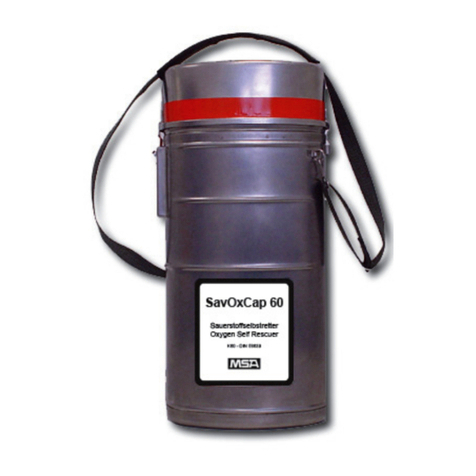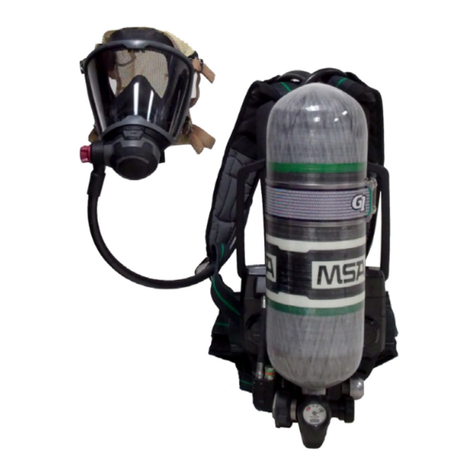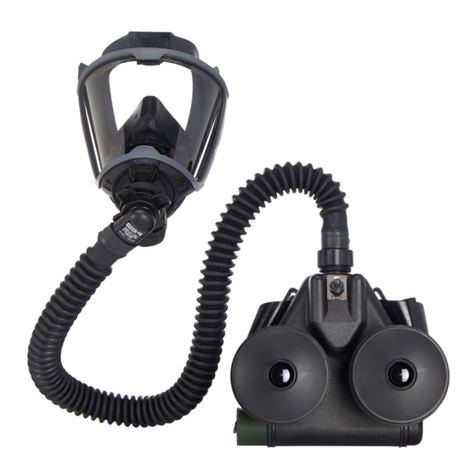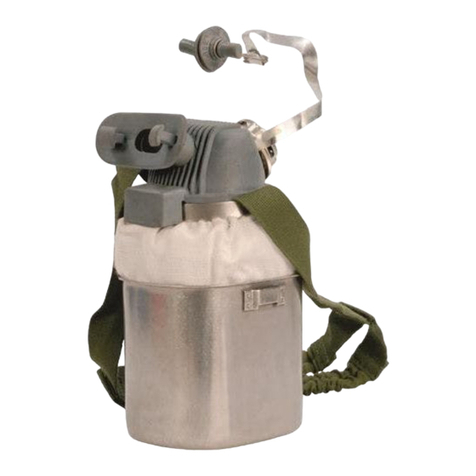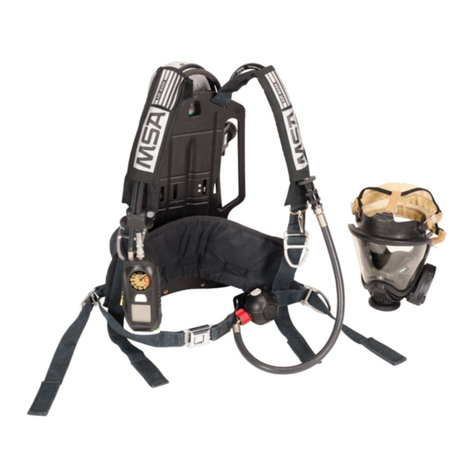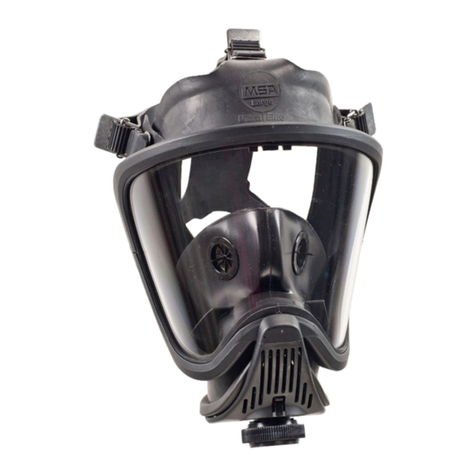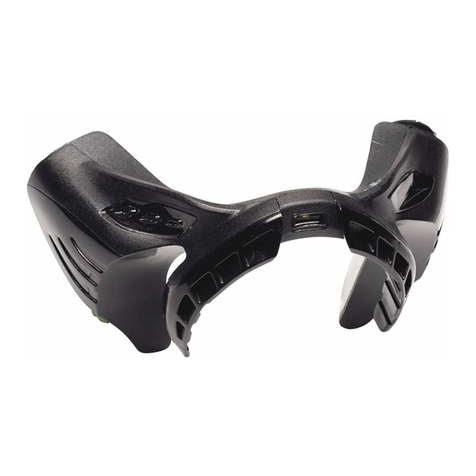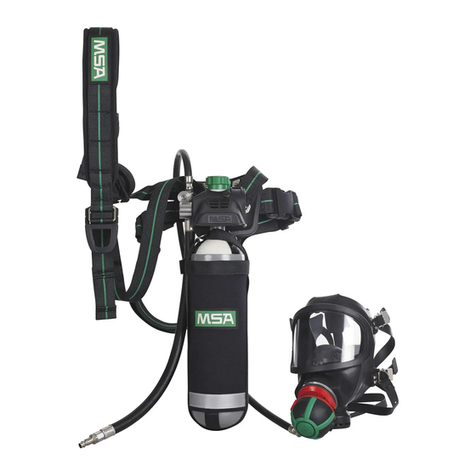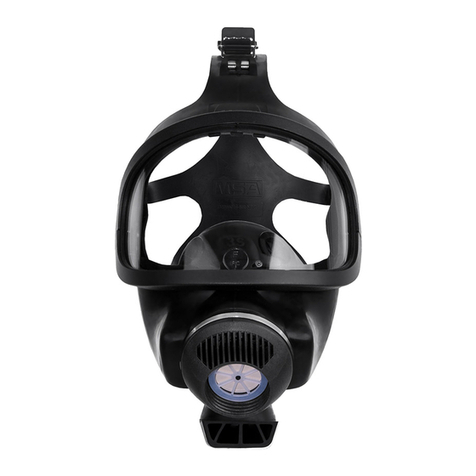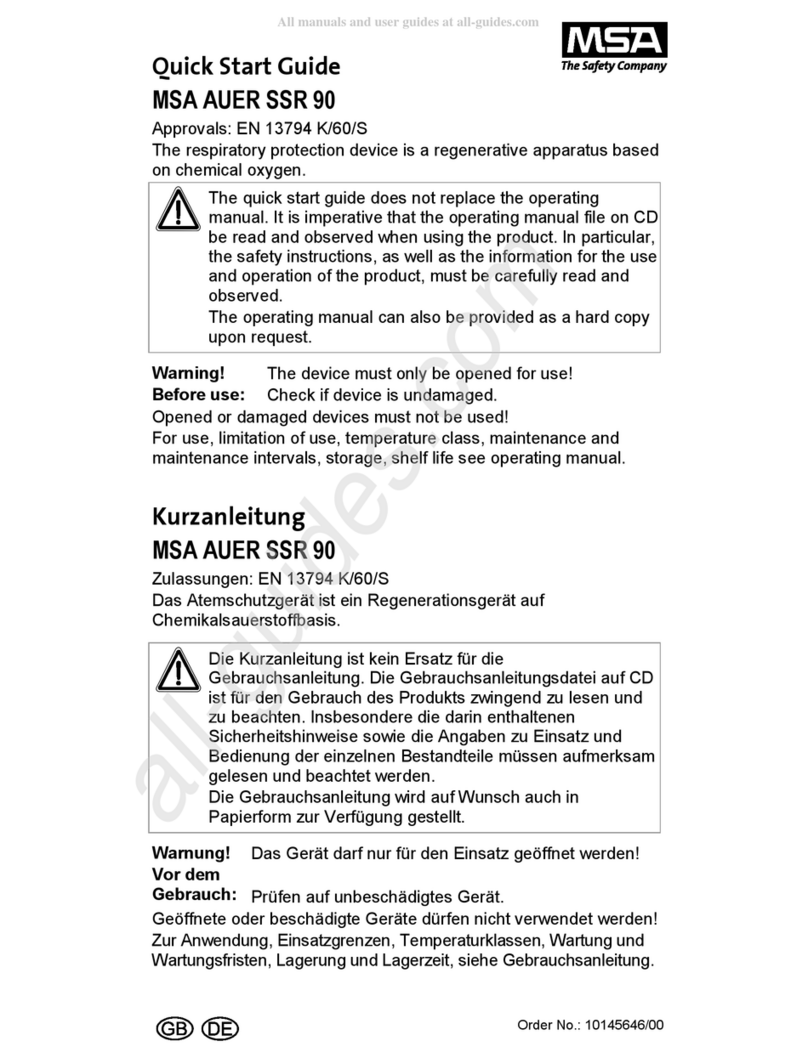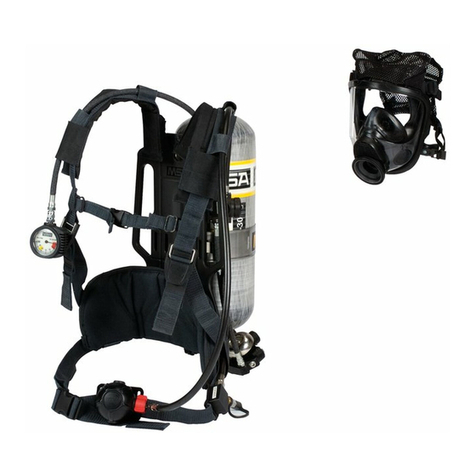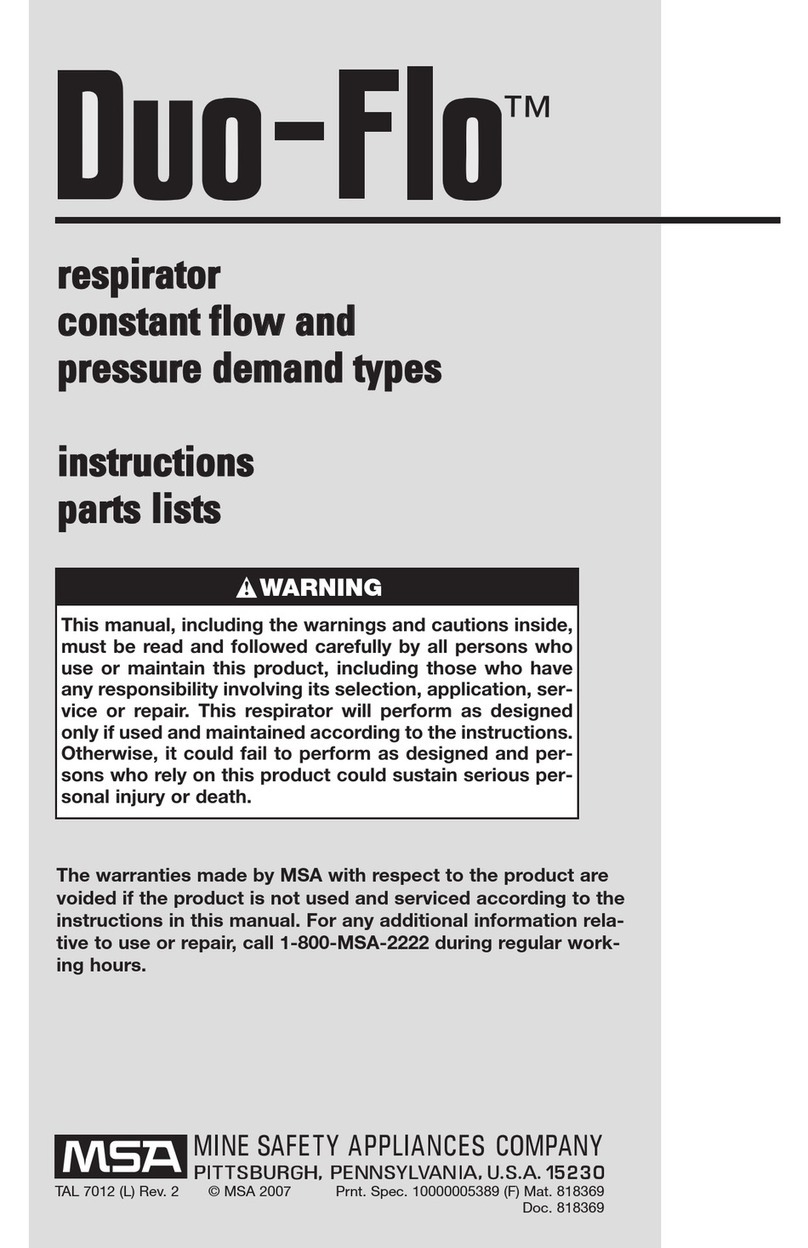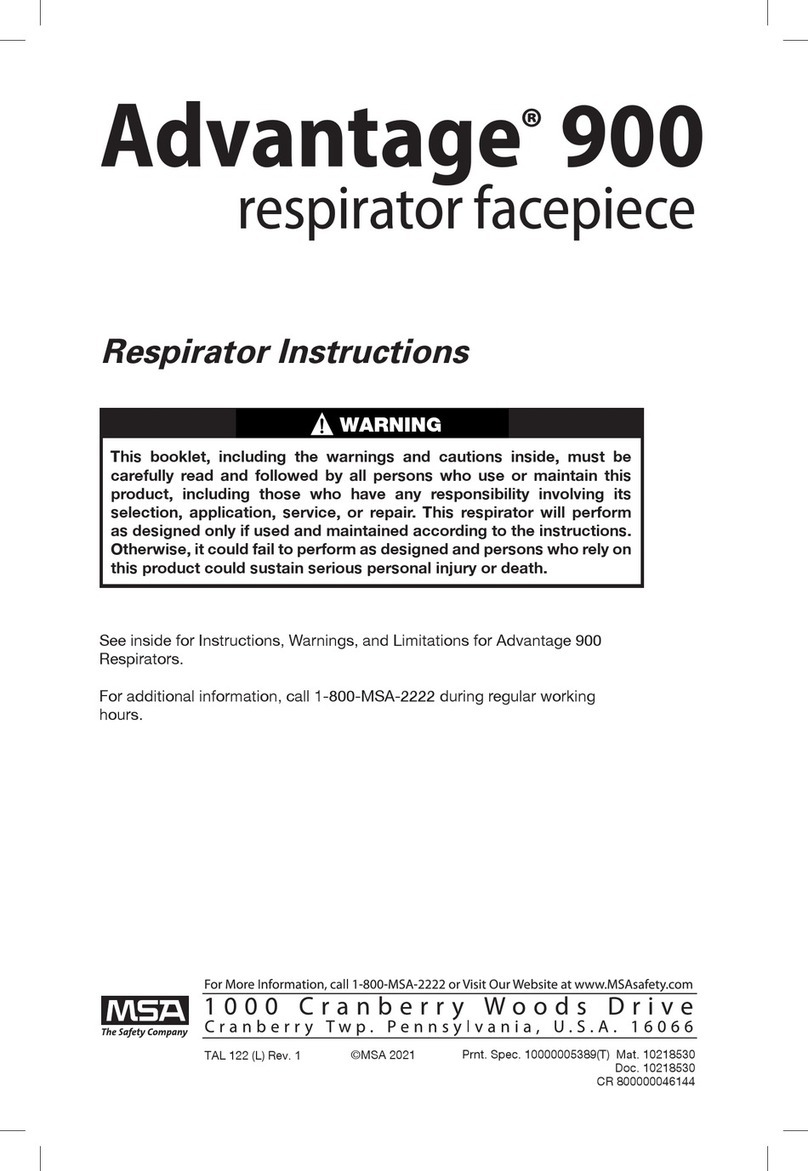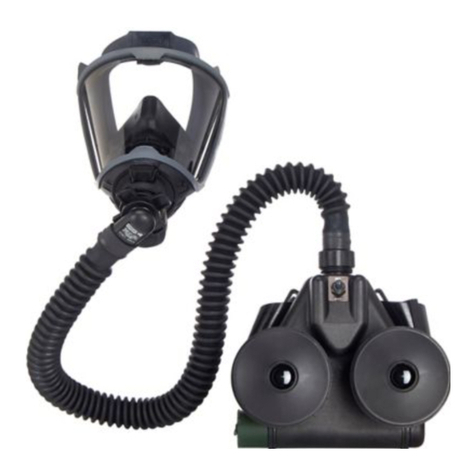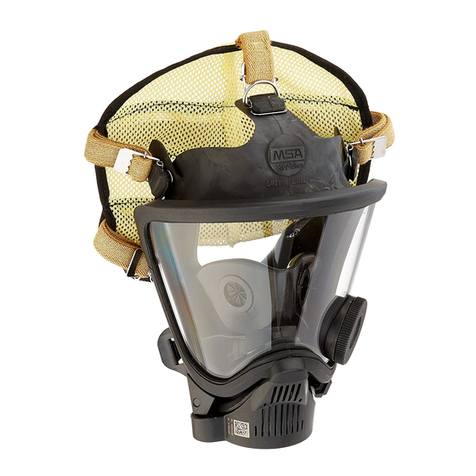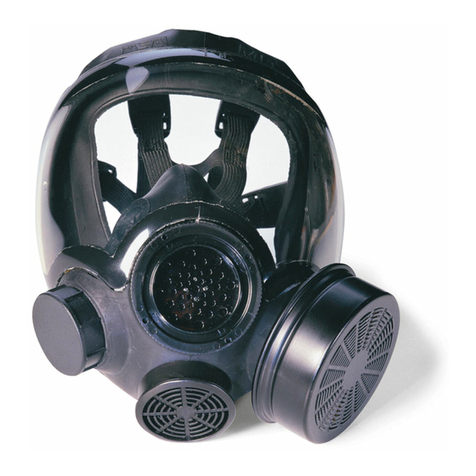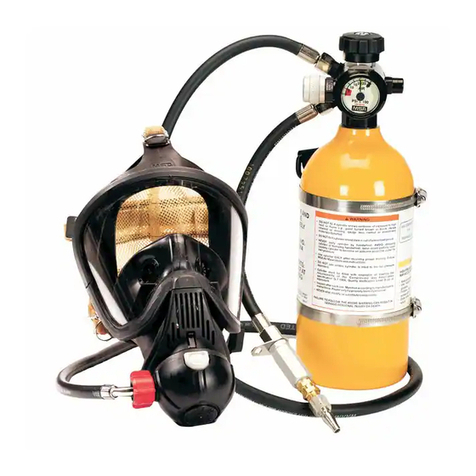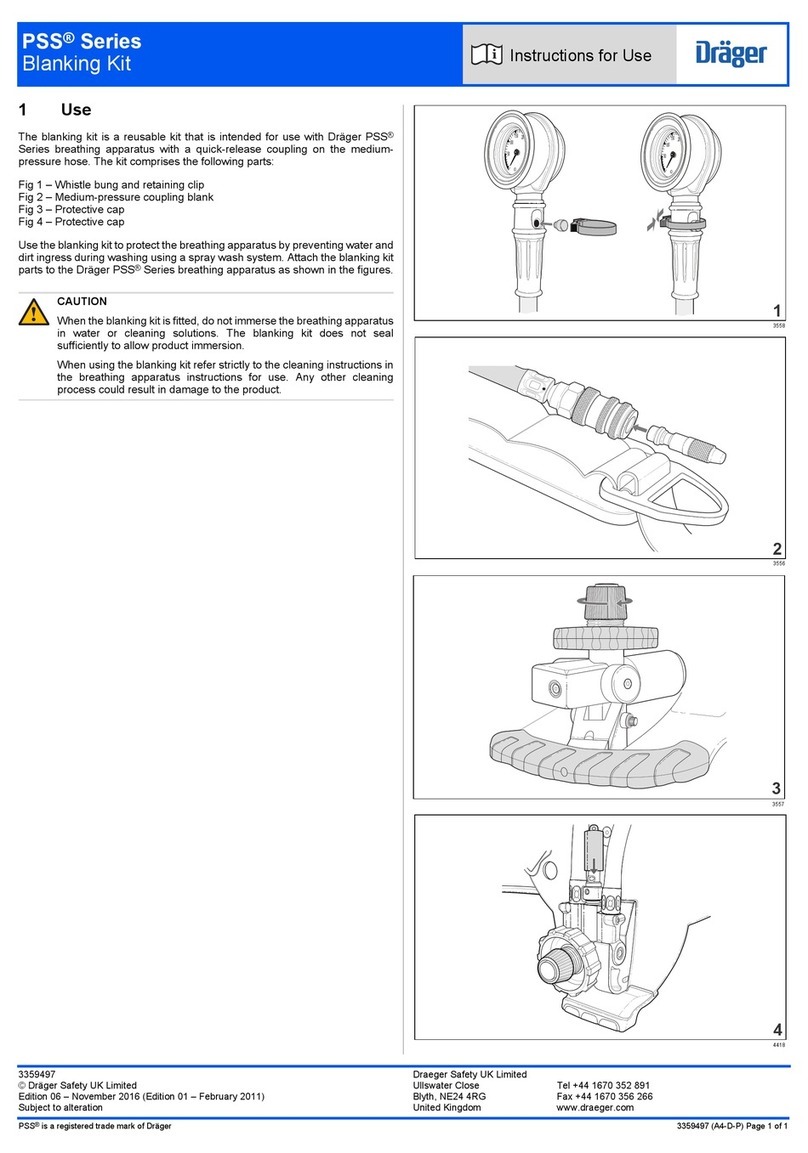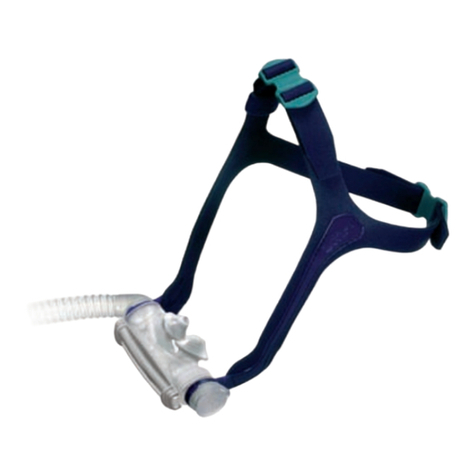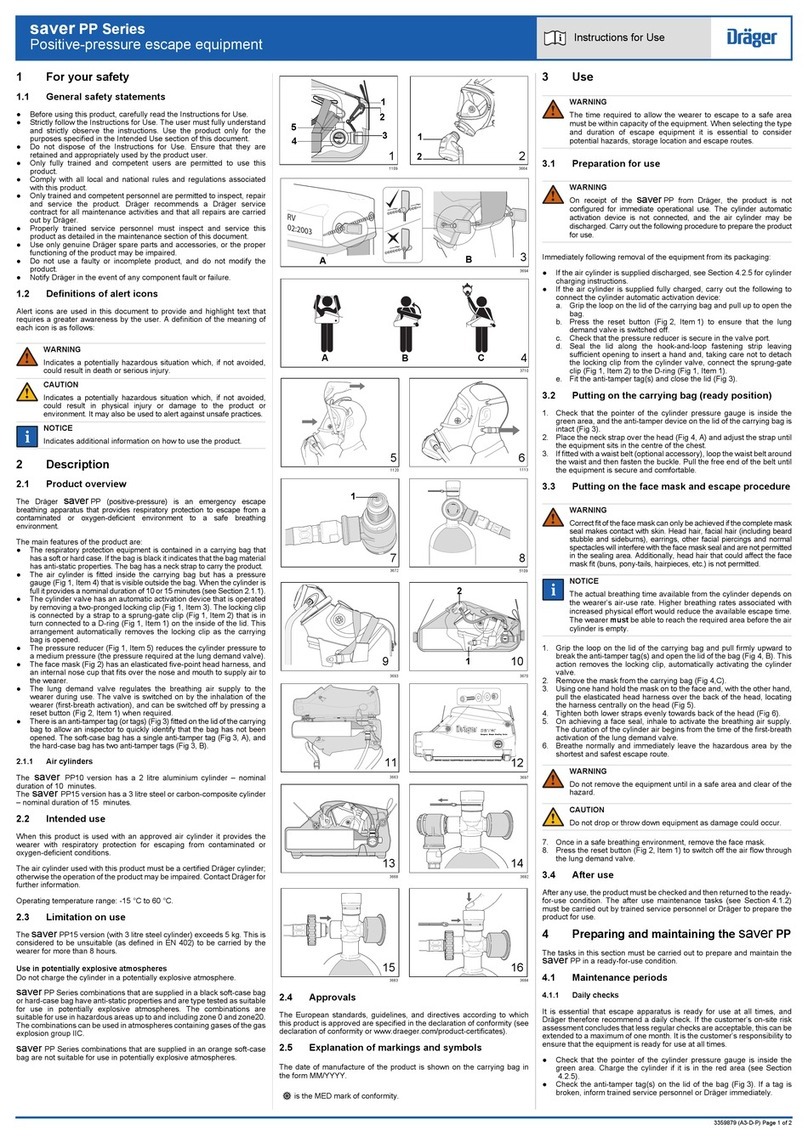account all factors that may influence
respiratory protection including spe-
cific work practices and other condi-
tions unique to the works environ-
ment. Cartridges equipped with an
end-of-service-life indicator for a spe-
cific contaminant present must be
replaced when the indicator changes
to the specified color or sooner if
using the respirator against a mixture
and the cartridge change-out sched-
ule specifies an earlier replacement.
b. If using the respirator against sub-
stances having poor warning proper-
ties, over exposure can occur without
user awareness. Take appropriate pre-
cautions to prevent overexposure,
which may include an earlier cartridge
change-out, or using an air-supplied
respirator or SCBA. For further infor-
mation refer to MSA’s Response
Respirator Selector.
c. Replace cartridges every shift, or
sooner if indicated by change-out
schedule or end-of-service-life indica-
tor. Use beyond one shift could result
in shorter than expected service time
and over exposure due to contaminant
desorption and migration through the
cartridge when not in use.
d. If using the respirator for escape,
replace cartridges after each escape.
Once the user breathes through the
respirator in a contaminated atmos-
phere, the cartridges may not provide
adequate protection for additional
escapes. Additionally, once the car-
tridges are initially placed into service
or carried by the user in anticipation of
escape, they must be replaced based
on an appropriate cartridge change-
out schedule. Extended exposure of
the cartridges to nuisance levels
(below the PEL) of the contaminant
may prevent the cartridges from pro-
viding adequate escape protection.
6. For respirators with combination car-
tridges (chemical cartridges with filters):
The limitations specified above for chem-
ical cartridges as well as the applicable
filter class apply for combination car-
tridges.
7. Applicable respirator use requirements as
specified in the OSHA Respiratory
Protection Regulation 29 CFR Part
1910.134 (or other requirements estab-
lished by the Regulatory Agency with
jurisdiction over the wearer). Additional
OSHA Regulations may also apply for
certain contaminants (See MSA’s
Response Respirator Selector).
EXPOSURE LIMITS
A listing of acceptable exposure limits from
the following sources is provided in MSA’s
Response®Respirator Selector:
— American Conference of Governmental
Industrial Hygienists (ACGIH)
— Occupational Safety and Health
Administration (OSHA)
— National Institute for Occupational
Safety and Health (NIOSH)
— American Industrial Hygiene Association
(AIHA)
Exposure Limits for Mixtures
The American Conference of Governmental
Industrial Hygienists (ACGIH) publishes the
following information to determine the TLV of
a mixture.
First determine the total concentration of the
chemical mixture (CMixture) from the individ-
ual contaminant concentrations (C1, C2,
C3...) using the following formula:
CMixture = C1+C2+C3+...
The TLV of the mixture is found by using the
following formula where T1, T2, T3, ... are the
individual contaminant TLVs and C1, C2,
C3... are the individual contaminant concen-
trations:
Only use these equations if the contaminants
present are actually mixed. Some substances
do not mix and may be present separately, for
example, in pockets or at different levels. In
that case, the lowest TLV of the substances
present must be used to determine the
appropriate respirator category for protection
against all contaminants present. See MSA’s
TMixture = CMixture
C1
T1
+C2
T2
+C3
T3
4
